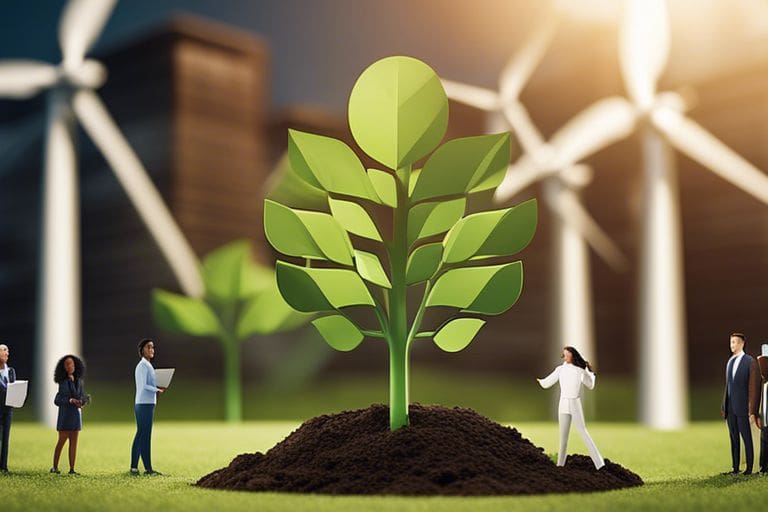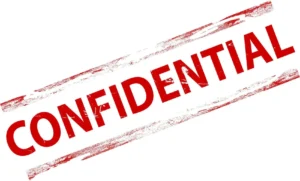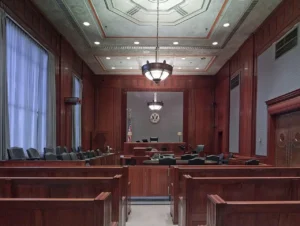Green technology laws are essential in promoting sustainable innovation and ensuring that technological advancements do not come at the expense of the environment. These laws regulate the development, implementation, and management of eco-friendly technologies, guiding businesses, policymakers, and stakeholders toward environmentally responsible practices. Understanding green technology laws is crucial for compliance, supporting sustainable practices, and contributing to the broader goal of environmental conservation. This article delves into the key aspects of green technology laws, including regulations, compliance requirements, and their impact on various industries.
The Importance of Green Technology Laws
Green technology laws play a critical role in fostering innovation while ensuring environmental protection. These laws create a regulatory framework that encourages the development and use of technologies aimed at reducing environmental impacts. Green technology laws help balance technological progress with ecological sustainability, ensuring that advancements contribute positively to environmental goals.
One of the primary purposes of green technology laws is to promote the adoption of technologies that mitigate environmental harm. By setting standards for clean energy, waste reduction, and pollution control, these laws drive innovation in sectors such as renewable energy, sustainable agriculture, and green manufacturing. Compliance with green technology laws enhances a company’s reputation, builds consumer trust, and often results in financial benefits such as tax incentives and grants for sustainable initiatives.
Key Components of Green Technology Laws
The legal framework for green technology is comprehensive and encompasses various components that address different aspects of environmental protection and sustainable innovation. Key components of green technology laws include:
- Regulatory Agencies: Federal and state agencies enforce green technology regulations. Key agencies include the Environmental Protection Agency (EPA) and the Department of Energy (DOE).
- Clean Energy Standards: Policies such as the Renewable Portfolio Standards (RPS) and Clean Energy Standards (CES) mandate a certain percentage of energy production from renewable sources.
- Incentives and Subsidies: Government incentives such as tax credits, grants, and loan programs support the development and adoption of green technologies.
- Permitting and Licensing: Green technology projects often require permits and licenses to ensure compliance with environmental regulations.
- Environmental Impact Assessments (EIAs): EIAs evaluate the potential environmental impacts of green technology projects, ensuring that negative impacts are mitigated.
Regulatory Agencies and Their Roles
Regulatory agencies play a pivotal role in enforcing green technology laws and ensuring compliance with environmental regulations. These agencies have the authority to issue permits, conduct inspections, and impose penalties for non-compliance. Understanding the roles and responsibilities of these agencies is crucial for businesses and policymakers.
Environmental Protection Agency (EPA): The EPA is responsible for enforcing federal environmental laws, including regulations related to air and water quality, waste management, and pollution control. The EPA sets environmental standards, conducts inspections, and ensures compliance with regulations. The EPA also provides guidance and support for businesses adopting green technologies.
Department of Energy (DOE): The DOE promotes the development and adoption of green technologies through research, funding, and policy initiatives. The DOE provides grants, loans, and technical assistance to support green technology projects. The DOE also develops and enforces energy efficiency standards and renewable energy policies.
State Energy Offices: State energy offices regulate green technology development at the state level. These offices implement state clean energy standards, issue permits, and provide incentives for green technology projects. State energy offices often work in collaboration with federal agencies to implement green technology regulations and promote sustainable practices.
Clean Energy Standards and Compliance
Clean Energy Standards (CES) and Renewable Portfolio Standards (RPS) are key components of green technology laws that mandate a specific percentage of energy production from renewable sources. These policies are designed to increase the use of clean energy, reduce greenhouse gas emissions, and promote energy diversification. Compliance with CES and RPS is essential for energy providers to meet legal requirements and support the growth of the green technology sector.
CES and RPS Requirements: CES and RPS requirements vary by state and specify the percentage of energy that must come from renewable sources. These requirements create a market for renewable energy credits (RECs), which represent the environmental attributes of renewable energy generation. Energy providers can meet CES and RPS requirements by generating renewable energy or purchasing RECs from other providers.
Compliance Mechanisms: Compliance with CES and RPS involves tracking renewable energy generation and REC transactions. Energy providers must report their renewable energy production and REC purchases to regulatory agencies. Non-compliance with CES and RPS can result in penalties, such as fines or enforcement actions.
Impact of CES and RPS on Green Technology Development: CES and RPS policies have been instrumental in driving the adoption of green technologies, such as wind, solar, and biomass. By creating a stable market for clean energy, these policies encourage investment in green technology projects and support the development of a diverse energy portfolio.
Incentives and Subsidies for Green Technology
Government incentives and subsidies are critical components of green technology laws that support the development and adoption of eco-friendly technologies. These financial incentives make green technology projects more economically attractive and help to offset the costs of development and operation.
Federal Incentives: The federal government offers various incentives for green technology projects, including tax credits, grants, and loan programs. Key federal incentives include the Investment Tax Credit (ITC) and the Production Tax Credit (PTC), which provide tax benefits for green technology investments. The Department of Energy (DOE) also offers grants and loan guarantees for green technology projects through programs such as the Loan Programs Office (LPO).
State Incentives: State governments provide additional incentives for green technology projects, such as rebates, grants, and performance-based incentives. State incentive programs vary by state and may include property tax exemptions, sales tax exemptions, and green technology production incentives. State energy offices administer these programs and provide technical assistance to green technology developers.
Impact of Incentives on Green Technology Development: Government incentives and subsidies have been instrumental in reducing the costs of green technology projects and accelerating their deployment. These financial incentives help to overcome economic barriers to green technology development and support the growth of the green technology sector.
Permitting and Licensing for Green Technology Projects
Permitting and licensing are essential components of green technology laws that ensure projects comply with environmental standards. Regulatory agencies issue permits and licenses to authorize green technology development and set conditions for compliance.
Types of Permits and Licenses: Various permits and licenses are required for green technology projects, including air quality permits, water discharge permits, and construction permits. Each permit sets specific conditions for project development and compliance with environmental standards.
The Permitting Process: The permitting process involves several steps, including application submission, review, public consultation, and permit issuance. Applicants must submit detailed information about the proposed project, including potential environmental impacts and mitigation measures. Regulatory agencies review the application to ensure compliance with environmental standards and conduct public consultations to gather stakeholder input. If the application meets the requirements, the agency issues the permit with conditions for compliance.
Compliance with Permit Conditions: Compliance with permit conditions is essential for maintaining the validity of the permit and avoiding legal penalties. Permit conditions may include monitoring and reporting requirements, pollution control measures, and environmental management practices. Regulatory agencies conduct inspections and audits to ensure compliance with permit conditions and take enforcement actions for violations.
Environmental Impact Assessments (EIAs) for Green Technology Projects
Environmental Impact Assessments (EIAs) are a critical tool for evaluating the potential environmental impacts of green technology projects. EIAs help to identify and mitigate negative impacts, ensuring that projects comply with environmental standards and promote sustainable development.
The EIA Process: The EIA process involves several steps, including scoping, impact analysis, mitigation planning, and public consultation. During scoping, the scope of the assessment is determined, and key environmental issues are identified. Impact analysis involves assessing the potential environmental impacts of the project and identifying mitigation measures to address these impacts. Mitigation planning involves developing strategies to minimize or avoid negative impacts. Public consultation provides an opportunity for stakeholders to provide input and raise concerns about the project.
Compliance with EIAs: Compliance with EIAs is essential for obtaining permits and approvals for green technology projects. Regulatory agencies review EIA reports to ensure that potential environmental impacts are adequately addressed and that mitigation measures are implemented. Failure to comply with EIA requirements can result in permit denials, legal penalties, and project delays.
Benefits of EIAs: EIAs provide several benefits, including improved environmental protection, enhanced project planning, and increased public involvement. By identifying and addressing potential environmental impacts, EIAs help to ensure that green technology projects are sustainable and environmentally responsible. EIAs also enhance project planning by providing valuable information for decision-making and improving project design. Public involvement in the EIA process helps to build trust and support for the project, ensuring that stakeholder concerns are considered.
Enforcement and Compliance in Green Technology Laws
Enforcement and compliance are critical components of green technology laws, ensuring that projects adhere to environmental standards and regulations. Regulatory agencies conduct inspections and monitor projects to ensure compliance and take enforcement actions for violations.
Inspections and Monitoring: Regulatory agencies conduct routine inspections and monitoring of green technology projects to assess compliance with environmental standards. Inspections may include site visits, review of records, and sampling of environmental media such as water and air. Monitoring involves collecting data on environmental conditions and project performance to track compliance and identify potential issues.
Enforcement Actions: When projects violate environmental standards, regulatory agencies can take enforcement actions to address the violations and protect public health and the environment. Enforcement actions can include issuing warning letters, imposing fines, revoking permits, and initiating legal proceedings. Agencies work with project developers to resolve violations and implement corrective actions.
Compliance Assistance: Regulatory agencies also provide compliance assistance to help project developers understand and comply with environmental standards. Compliance assistance programs offer resources, training, and technical support to promote voluntary compliance and improve environmental performance.
Legal Challenges and Disputes in Green Technology Laws
Green technology laws can lead to various legal challenges and disputes, including regulatory compliance issues, liability for environmental damage, and disputes over land use and access. Understanding the legal avenues for resolving these disputes is essential for project developers and stakeholders.
Regulatory Compliance Issues: Project developers must comply with a complex array of regulations, and non-compliance can result in legal penalties and enforcement actions. Common compliance issues include violations of environmental standards, land use regulations, and green technology standards. Regulatory compliance issues can be resolved through negotiations with regulatory agencies, administrative hearings, and, if necessary, litigation.
Liability for Environmental Damage: Project developers can be held liable for environmental damage caused by their activities. Liability claims can result in significant financial losses and damage to the developer’s reputation. Project developers must implement robust environmental management practices and maintain documentation to demonstrate compliance with environmental standards. Legal defense strategies may involve challenging the causation of the damage and demonstrating adherence to environmental practices.
Disputes Over Land Use and Access: Disputes over land use and access can arise between different stakeholders, such as landowners, project developers, and government agencies. These disputes may involve issues such as land acquisition, zoning, and access to public lands. Legal strategies for resolving land use disputes may include negotiation, mediation, arbitration, and litigation.
The Role of Technology in Green Technology Compliance
Technology plays an increasingly important role in ensuring compliance with green technology laws and improving the efficiency of sustainable development. Digital tools and platforms can enhance monitoring, reporting, and data analysis, supporting better decision-making and compliance.
Geographic Information Systems (GIS): GIS technology provides valuable tools for mapping and analyzing spatial data related to green technology projects. GIS can help project developers track land use, monitor environmental conditions, and identify potential impacts. GIS supports compliance with land use regulations and enhances planning and decision-making.
Remote Sensing: Remote sensing technology uses satellites and aerial imagery to monitor environmental conditions and project development. Remote sensing provides real-time data on land cover, water quality, and vegetation health, supporting compliance with environmental standards. Remote sensing can also detect illegal activities and monitor compliance with permits and licenses.
Environmental Monitoring Systems: Environmental monitoring systems use sensors and data loggers to collect real-time data on environmental conditions such as air quality, water quality, and soil health. These systems provide continuous monitoring and early detection of potential issues, supporting compliance with environmental standards. Environmental monitoring systems enhance transparency and accountability in sustainability projects.
Future Directions in Green Technology Laws
As the field of green technology continues to evolve, green technology laws must adapt to address new challenges and opportunities. Future directions in green technology laws may include:
- Promoting Advanced Technologies: Regulations that promote the development and adoption of advanced green technologies, such as smart grids, energy storage solutions, and advanced recycling technologies, will become increasingly important. Future laws may include incentives for innovative technologies and stricter regulations on carbon emissions and resource use.
- Enhancing Circular Economy Practices: Policies that support the transition to a circular economy, where waste is minimized, and resources are reused, will be a focus of future green technology regulations. Circular economy practices help to reduce environmental impact, promote resource efficiency, and foster sustainable consumption and production patterns.
- Addressing Climate Change: Green technology laws will play a critical role in addressing climate change by promoting low-carbon technologies and reducing greenhouse gas emissions. Future regulations may include carbon pricing, emissions trading, and policies to phase out fossil fuels in favor of renewable energy sources.
- Strengthening International Collaboration: Global sustainability requires stronger international collaboration on green technology standards and enforcement. Future green technology laws may involve harmonizing regulations across countries, improving information sharing, and coordinating responses to environmental challenges. International agreements and partnerships will be crucial for addressing transboundary environmental issues and promoting global sustainability.
- Supporting Just Transition: Ensuring that the transition to green technologies is equitable and inclusive will be a key focus of future green technology laws. Policies that support workforce development, community engagement, and equitable access to green technologies will be essential for a just transition. Future regulations may include support for retraining programs, economic diversification in affected regions, and initiatives to address environmental justice concerns.
- Fostering Public-Private Partnerships: Public-private partnerships will be vital for driving innovation and scaling up green technology solutions. Future green technology laws may include frameworks for collaboration between governments, businesses, and research institutions. These partnerships can help to leverage resources, share risks, and accelerate the deployment of green technologies.
Conclusion
Green technology laws are fundamental to promoting sustainable innovation and ensuring that technological advancements contribute to environmental protection. By establishing standards for environmental protection and supporting the adoption of eco-friendly technologies, these laws help to ensure that economic growth is balanced with ecological responsibility. Understanding and complying with green technology laws is essential for businesses, policymakers, and stakeholders to achieve environmental goals, avoid legal penalties, and contribute to global efforts to mitigate climate change.
Effective green technology laws create a stable regulatory environment that encourages investment in sustainable projects and supports the long-term health of ecosystems. By leveraging technology, encouraging public participation, and addressing emerging issues, green technology regulations can support the development of a resilient and sustainable future.
As the landscape of green technology continues to evolve, ongoing efforts to strengthen and adapt green technology laws will be essential in promoting sustainable, equitable, and resilient development. By fostering collaboration, innovation, and accountability, green technology laws can help to create a more sustainable and prosperous world for future generations.
Type of Attorney for Green Technology Law Issues and How to Find Them on Attorneys.Media
When dealing with green technology law issues, it is crucial to have an attorney who specializes in this area to navigate the complex regulations and ensure compliance. Green technology attorneys are legal professionals with expertise in environmental law, regulatory compliance, sustainable innovation, and green technology policies. They provide invaluable guidance to businesses, project developers, and policymakers involved in green technology projects, helping them navigate the legal landscape and avoid potential legal pitfalls.
Green technology attorneys typically handle a wide range of issues, including regulatory compliance, risk management, and litigation. They assist clients in understanding and complying with federal and state green technology regulations, developing environmental impact assessments (EIAs), and obtaining necessary permits and licenses. In the event of environmental damage or regulatory disputes, these attorneys provide legal defense and manage liability claims. They also represent clients in disputes with regulatory agencies, helping to resolve enforcement actions and negotiate settlements.
To find a qualified green technology attorney on Attorneys.Media, you can utilize the platform’s comprehensive search features and resources. Start by visiting the Attorneys.Media website and navigating to the search bar. Enter relevant keywords such as “green technology attorney,” “sustainability lawyer,” or “environmental law attorney” to filter through the database of legal professionals. The search results will provide a list of attorneys who specialize in green technology law, complete with their profiles, areas of expertise, and contact information. This allows you to review their credentials, experience, and client reviews to make an informed decision.
Additionally, Attorneys.Media offers video interviews and profiles of green technology attorneys, giving you a more in-depth look at their practice and approach. These resources can help you understand how each attorney can assist with your specific legal needs related to green technology law. You can also find articles and legal insights on the platform that highlight the expertise of these attorneys and provide valuable information on navigating green technology regulations. By leveraging these tools, you can confidently select an attorney who is well-equipped to handle the legal complexities of green technology law and ensure your projects comply with all relevant regulations.
Attorneys.Media Video Document References
- Is Personal Injury Part of Your Law Practice?
- As an Attorney, How Are You Generating Content for Your Online Presence?
- How Can You Help Potential New Clients Get Their Questions Answered?
- How Do You Differentiate Yourself When Someone Looks Online for Help?
- How Do You Differentiate Yourself as a Criminal Defense Attorney?
- Have You Been Thinking About Video Marketing for Your Law Firm?
- Should Attorneys Use Video Marketing to Attract New Clients?
- What Do Potential Clients See When They Research Your Name Online?
- How Attorneys.Media Can Help You





















